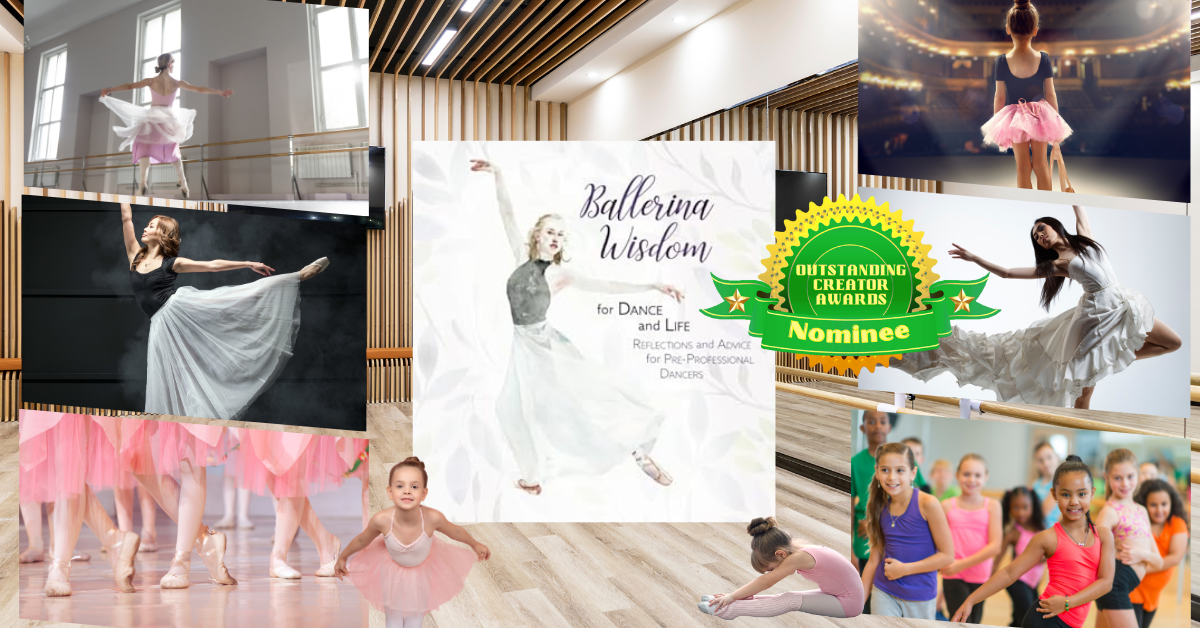|
Score: 93/100 (9.3 out of 10)
Here's a book that made us stop, think, and go hmm...! For years now, the mother-daughter team at Once Upon a Dance has blessed us with some of the brightest, boldest, and most beautiful children's books to ever come our way! All of them seek to take the concept of dance and marry them with colorful characters, brilliant art, and compelling stories. However, Ballerina Wisdom for Dance and Life, is quite a bit different: it's actually more like a short manifesto on the experiences of being a performer. Yes, that applies to all sorts of performing arts, not just ballet or dance. This is very special and very valuable as it comes from a mother-daughter dance team with a combined decades of experience! You are learning from people who have been there and done that. You are learning from people who've walked the talk. We are so used to seeing Ballerina Konora at her best. She is so graceful, beautiful, and gorgeous. Her movements seem so fluid, effortless, and elegant in every single other book. It's easy to see a performer as amazing and seemingly flawless as Ballerina K and think, She makes it look so easy! Maybe she's just a natural. I can't do that. I can't be that good. It's easy to forget that even the best fall down sometimes and have ups and downs. Like with many other careers, being a performer is a journey with a lot of peaks and valleys. It can be a roller-coaster ride with many lessons to learn along the way. That seems to be the premise of this book: to enlighten, inspire, and remind up-and-coming performers that they're on a journey--a journey that isn't linear or without setbacks, yet one that is hella worth it. It's a journey that often winds and weaves. It's a journey that takes patience, commitment, dedication, and discipline. One such lesson we took away from this book is that it's important to put in the work: be early to rise and late to fall. That may sound straightforward, but many say they want to pursue a passion yet don't put in the time, energy, and effort toward pursuing it. It's not outright written in this book, but Rome wasn't built in a day. Simon Biles didn't become the greatest artistic gymnast overnight. Time, effort, energy, commitment, and persistence are what make a person great. It's a mindset: getting better every day. One lesson that surprised us in a book about performing was the one about giving grace and acting with kindness. However, it makes sense if you really think about it. Success and longevity have a lot to do with who you know and networking. You might not want to hear that, but it's true. And what's the best way to make and keep friends? Make people happy. Be kind to them. Be giving. Nurture relationships. For example, maybe you had a dance partner early in your career who is now with Disney or Cirque du Soleil who can now connect you with agents. Or maybe your ballet teacher can serve as a reference toward a new job. Listening to your body is also a great lesson for both performers and athletes to learn. You need to be sensitive to what your body is telling you. You need to realize that you will do better when you work with your body rather than against it. Sleep, eat well, and tend to sore spots and injuries. Don't ignore problems. Also, take time to relax and de-stress. Probably the most surprising and interesting lesson that we saw in here was to ask for what you want. So many people don't know their self-worth or value. They're afraid to ask for a raise or promotion. They're afraid to apply for a better job. They're afraid to try. However, you never know if you don't try. You're also very unlikely to receive if you don't ask. This is a really interesting book. Apparently, it's part of a ballerina wisdom series, a kind of sidebar off of the Once Upon a Dance series which focuses more on performing itself. If there's some small, constructive criticism we could provide, it's that we'd have preferred if the illustrations were simply clear rather than abstract (which seemed to be an artistic or stylistic choice). The reason is that it distracts a little bit from the text, which is also slightly on the wordy side. The italics may also be a little bit of a challenge to read when also paired with the abstract figures. That type of illustration is usually better paired with very short phrases of maybe 1 to 10 words, usually bigger, bolder words. The reason for this is that the text needs to stand out more when the graphics are less sharp or when more is happening on the page. However, older children and adults can definitely read this from cover to cover. They can definitely take something enlightening away from this. It can also be comforting just to have books available on the topic of being a performer, helping to inspire and nurture a new generation of dancers, ballerinas, gymnasts, and more! If you or your child is an up-and-coming performer who needs a jolt, check this out on Amazon!
1 Comment
Leave a Reply. |
Archives
July 2024
Categories |

 RSS Feed
RSS Feed